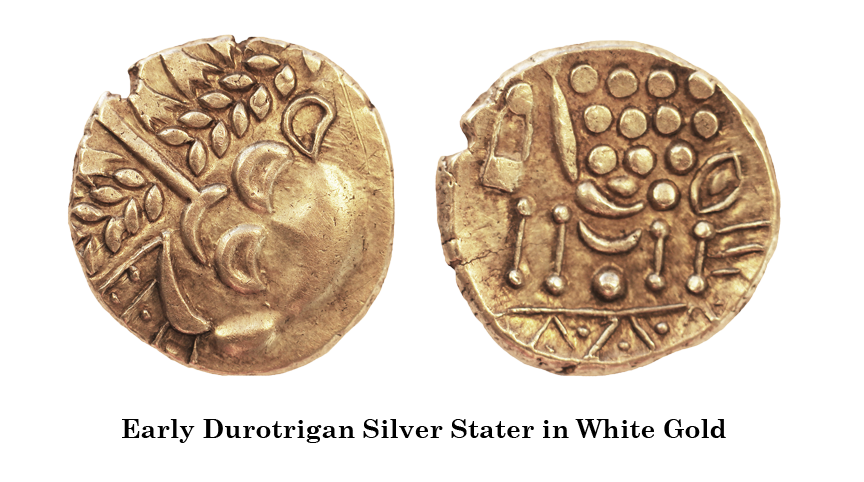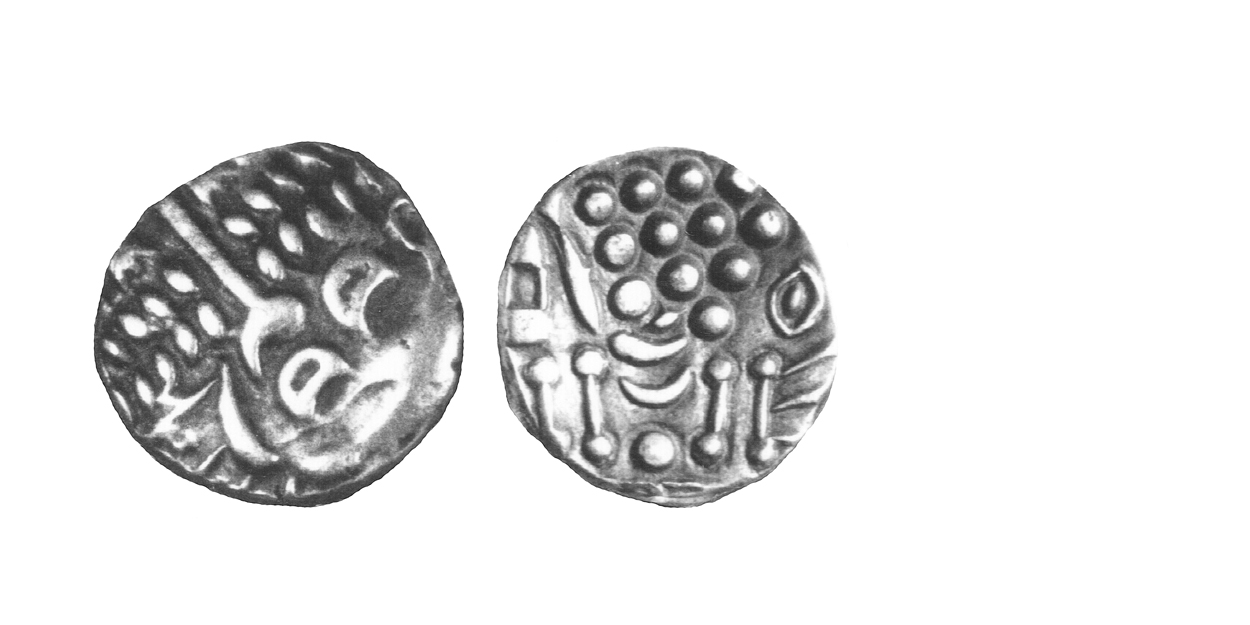
About the Coins
Introduction (Info)
Introduction to the 1989 edition of Celtic Coinage of Britain
Scientists are uncovering a Celtic Britain no one has ever seen before. A sophisticated, technology-driven one – the roots of today's industrialized society.
The long-held view of the British Celts as a colorful, barbaric people, ripe for conquest by the more advanced Mediterranean civilization of Rome is crumbling. The Roman invasion of Britain, as Barry Cunliffe recently stated, was not the conquest of a primitive society by a more advanced one, it was the blending of two advanced civilizations.
Roman greatness is easy to see and appreciate – the Romans were masters of organization and their architecture survives for us to marvel at. But Celtic greatness lies hidden. The Celts care little for monumental architecture – the directed their brilliance instead to the PROCESS TECHNOLOGIES.
Everyone can appreciate today's spacecraft and high-speed computers. But surprisingly, the highest technological sophistication is applied to simple items like razor blades and cheese wrapper. Today's metallurgists, polymer chemists, electronic engineers, statisticians and physicists work to improve the manufacture of everyday items – to optimize the manufacturing process.
Similarly, the Celts devoted their energies to the control of their environment and the manufacture of everyday goods. At Danebury, twenty year's excavations are revealing the sophistication of Celtic agriculture, animal husbandry and land-use. Studies at Butser Iron Age Farm are showing an unsuspected level of efficiency in Celtic agriculture, and an early knowledge of aseptic food-preservation techniques.
Meanwhile, scientists at the Department of Metallurgy and Science of Materials at Oxford are unravelling the complexity of Celtic metal-working – and are discovering an astounding knowledge of alloys and the methods of mass-production. A high degree of social organization must have existed to create and nurture this technology.
Celtic technology shows its brilliance most clearly in the coinage, however, and this book focusses attention on that story. The coins of the Celtic tribes are masterpieces of abstract beauty. But behind those abstract images lies the story of one of the world's most complex and sophisticated coinages.
British staters were made of three-part alloys of gold, silver and copper. The tribes were forced to debase them because of economic pressures, but they did this in a clever way. Over time, they gradually decreased the weight of the coins and reduced the gold content. But as they did this, they manipulated the ratio of gold, silver and copper to keep the colour almost constant. The moneyers placed secret marks on the coins so they could tell the gold content and weight by sight. However, the average person would have had difficulty detecting the debasement over the span of a lifetime.
In Kent, an early series of cast bronze coins show marks caused by mould-making experiments. The moneyers were trying out different ways of producing the moulds to speed up production and produce better-quality coins. The experimenting, testing and innovating are akin to procedures of modern industrial engineering.
These are only two examples of the things discovered during the last few years that are revolutionizing our thinking about Celtic coinage. In preparing this book, I have integrated the results of metallurgic studies, statistical analyses of coin weights, die-cutting studies, findspot and hoard analyses, typological studies and the testimony of the ancient authors. I have had to restructure most of the catalogue as a result of this synthesis, an the views presented are often different from earlier writers.
Next Section – History of the Coinage

